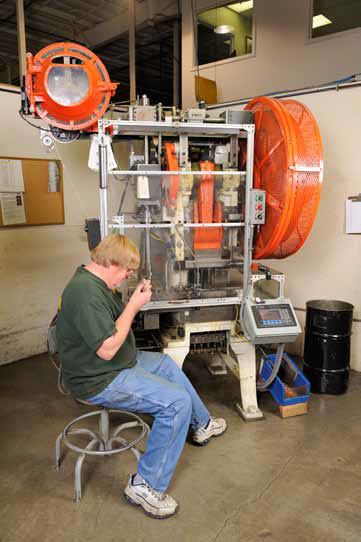Understanding the Science Behind PT141 Peptide: Mechanism and Effects
PT141, also known as Bremelanotide, is a synthetic peptide that has garnered significant attention for its role in enhancing sexual arousal and treating sexual dysfunction. Originally developed from Melanotan II, PT141 was found to have a pronounced effect on sexual desire, leading to its development as a standalone therapeutic agent. This article delves into the biochemical mechanisms of PT141 and its effects on the body.
The Biochemical Mechanism of PT141
Melanocortin Receptor Agonist
PT141 operates primarily as an agonist of the melanocortin receptors, particularly the melanocortin 4 receptor (MC4R) and, to a lesser extent, the melanocortin 1 receptor (MC1R). These receptors are part of the G-protein-coupled receptor (GPCR) family and play a crucial role in regulating various physiological processes, including sexual function, appetite, and pigmentation.
- Binding to Receptors:
- PT141 binds to MC4R receptors in the central nervous system. This receptor is extensively involved in the regulation of sexual behavior. Activation of MC4R by PT141 initiates a cascade of intracellular events that lead to the production of cyclic adenosine monophosphate (cAMP), a secondary messenger crucial for transmitting the signal inside the cell.
- Signal Transduction:
- The binding of PT141 to MC4R leads to the activation of adenylate cyclase, an enzyme that converts adenosine triphosphate (ATP) to cAMP. The increase in cAMP levels triggers a series of downstream effects, including the activation of protein kinase A (PKA). PKA then phosphorylates various target proteins that modulate neuronal activity and gene expression, ultimately resulting in increased sexual arousal.
Effects on the Nervous System
PT141's primary effects are mediated through its action on the central nervous system rather than the vascular system, distinguishing it from other treatments for sexual dysfunction, such as phosphodiesterase type 5 inhibitors (e.g., Viagra and Cialis).
-
Hypothalamic Activation:
- PT141 acts on the hypothalamus, a critical brain region involved in controlling sexual behavior. By activating neurons in the hypothalamus, PT141 enhances sexual motivation and arousal.
-
Modulation of Dopamine and Other Neurotransmitters:
- Dopamine, a neurotransmitter associated with pleasure and reward, plays a pivotal role in sexual arousal. PT141 has been shown to increase dopamine levels in the brain, further enhancing sexual desire. Additionally, PT141 influences other neurotransmitters such as norepinephrine and serotonin, contributing to its overall effect on sexual function.
Clinical Effects of PT141
Sexual Arousal and Erectile Function
Clinical studies have demonstrated the efficacy of PT141 in treating both male and female sexual dysfunction. For men, PT141 has been shown to improve erectile function, while in women, it enhances sexual desire and arousal.
-
Erectile Dysfunction in Men:
- PT141 has been tested in men with erectile dysfunction (ED) who did not respond adequately to traditional ED medications. The peptide has shown promising results, providing an alternative mechanism of action through central nervous system pathways rather than direct vascular effects.
-
Female Sexual Dysfunction:
- For women, PT141 has been effective in treating hypoactive sexual desire disorder (HSDD). Clinical trials have shown that PT141 significantly increases sexual desire and the number of sexually satisfying events in women.
Potential Side Effects and Considerations
Like any therapeutic agent, PT141 comes with potential side effects. Common side effects include nausea, headache, and flushing. It is essential for individuals considering PT141 to consult with a healthcare professional to ensure its suitability and to discuss any potential risks.
Conclusion
PT141 represents a novel approach to treating sexual dysfunction through its action on the central nervous system, particularly the melanocortin receptors. By enhancing sexual arousal and desire via biochemical pathways distinct from traditional treatments, PT141 offers a promising alternative for individuals experiencing sexual dysfunction. As research continues, our understanding of PT141's mechanisms and effects will undoubtedly deepen, paving the way for new therapeutic applications and improved sexual health.

PRODUCING THE BULLET JACKET
All our bullet jackets are made from gilding metal, a copper alloy composed of 95% copper and 5% zinc. In order to match our different bullet requirements and meet stringent quality objectives, we buy nineteen different strip sizes of gilding metal and require three times more dimensional and quality control than is considered standard in the copper manufacturing industry. In fact, Olin Brasshas a special alloy exclusive to Sierra Bullets. This enables us to build extremely high uniformity into every one of our finished bullets.
The bullet begins to take shape during the manufacturing process when the jacket material is first blanked and then brought through a series of drawing processes. Special tooling made in our own tool and die shop ensures that the jacket is drawn evenly and that uniform wall thickness is maintained for accuracy. Jackets which have been drawn to the proper wall construction are then trimmed to a length with a tolerance of +/- 0.001.” This ensures consistent weight and proper forming when the bullet is assembled.
After each step, the bullet jackets are washed and rinsed using a special cleaning process developed by our experienced personnel. During each phase of production, roving quality control inspectors check specifications to ensure that the only part to move on is a perfect one. Reports on the quality of parts being manufactured are maintained in every department and are periodically reviewed by shift supervisors.
